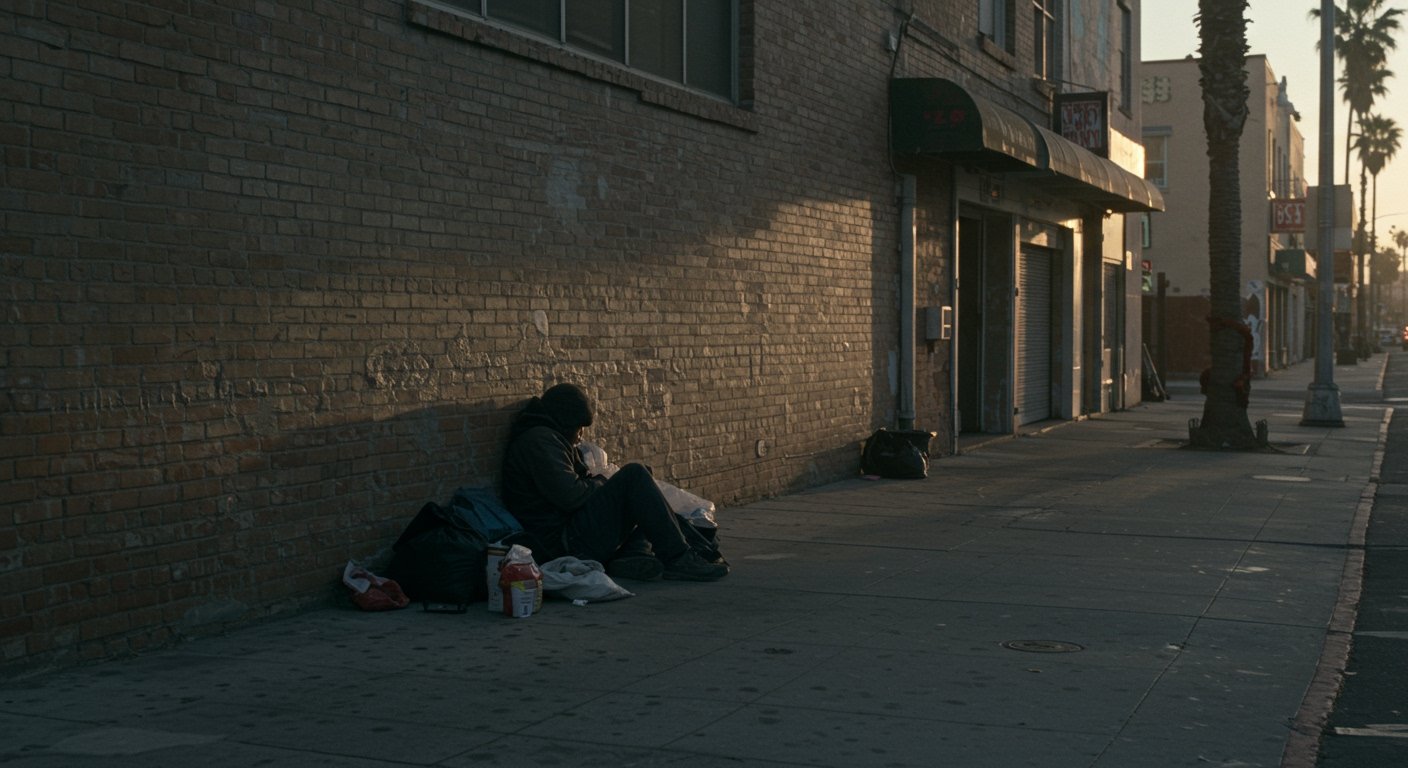Los Angeles, CA – A significant new report reveals a complex shift in the landscape of homelessness across three pivotal Los Angeles neighborhoods. While the overall number of unsheltered individuals saw a notable decrease in 2024, marking the first decline in years for these areas, the composition of the remaining population appears to be changing, with those living without any form of shelter becoming the most common group.
The report, released on July 1, 2025, by the RAND Corporation, focused on Hollywood, Skid Row, and Venice. It found a combined 15% drop in the unsheltered population in these locations during 2024 compared to the previous year. This finding is part of the ongoing Los Angeles Longitudinal Enumeration and Demographic Survey (LA LEADS) Project, which began tracking these populations in 2021.
First Decline Since 2021
The 15% overall reduction represents a crucial milestone for the LA LEADS project, indicating a potential turning point after years of increases in unsheltered homelessness within these highly visible and challenging urban environments. According to the RAND analysis, this overall decline is likely attributable to increased access to both interim and permanent housing programs implemented across the city. Specifically, the report cites initiatives such as Mayor Karen Bass’s Inside Safe program as contributing factors to successfully moving individuals off the streets and into more stable conditions.
While the aggregated data for the three neighborhoods shows positive movement, the report provides a more nuanced picture when examining each area individually. The study identified a combined decrease of nearly 700 unsheltered individuals across Hollywood and Venice. Hollywood experienced a substantial 49% decline in its unsheltered population, while Venice saw a 22% reduction. However, this significant progress was partially counterbalanced by an increase in Skid Row, where the unsheltered population rose by 170 individuals, a 9% hike.
The Growing Challenge of “Rough Sleeping”
Perhaps the most striking finding of the RAND report concerns the shifting characteristics of the unsheltered population that remains. The study specifically highlighted the category of “rough sleeping,” defined as living without a tent, a makeshift shelter, or a vehicle. Even as the total number of unsheltered residents in the study areas decreased, the report noted that the number of individuals engaging in “rough sleeping” showed little change.
As a result, this group now constitutes approximately 40% of the total unsheltered population across Hollywood, Skid Row, and Venice combined, making it the most prevalent form of unsheltered homelessness observed in these specific neighborhoods.
Implications for Outreach and Services
Louis Abramson, an adjunct researcher at RAND and the lead author of the report, commented on the implications of these findings. While acknowledging that there has been “real progress in moving people off the street,” he cautioned that those who remain unsheltered may represent a more vulnerable and harder-to-engage segment of the population. Abramson suggested that the stability and well-being of this group might not be improving, stating that their “level of health, well-being, and connectivity is not improving” based on the study’s observations.
This highlights a critical challenge for policymakers and service providers: the individuals still living unsheltered, particularly the growing proportion of “rough sleepers,” may require more intensive and tailored outreach strategies and support services to successfully transition into housing. Their lack of even basic shelter like a tent could indicate greater barriers to accessing or accepting traditional forms of assistance.
Context and Future Data
The findings of the RAND study align with preliminary indications from the broader Los Angeles County area. In March, the Los Angeles Homeless Services Authority (LAHSA) released preliminary results from its 2025 point-in-time count, which projected a countywide decline of 5% to 10% in unsheltered homelessness. While the RAND study provides detailed, longitudinal data for specific key neighborhoods, the LAHSA count offers a wider snapshot of the entire county.
LAHSA is scheduled to release its final, comprehensive results of the countywide count on July 14. This upcoming data will provide a more complete picture of whether the trend observed in the RAND study’s focus areas – a decrease in total unsheltered numbers alongside a potential shift in the population’s characteristics – is reflected across Los Angeles County as a whole.
Conclusion
The RAND Corporation’s July 1st report on homelessness in Hollywood, Skid Row, and Venice presents a complex but cautiously optimistic view. The overall decline in unsheltered numbers in these high-profile neighborhoods is a positive development, suggesting that increased investments in housing programs are yielding results. However, the study underscores the persistent challenge posed by the segment of the unsheltered population defined as “rough sleepers,” whose numbers have not decreased significantly and who now form the majority group. Reaching and assisting this potentially more vulnerable population will require continued focus and potentially adapted strategies as Los Angeles continues its efforts to address the homelessness crisis.





